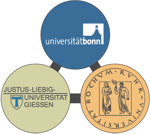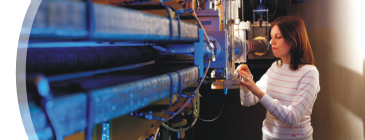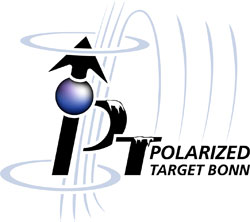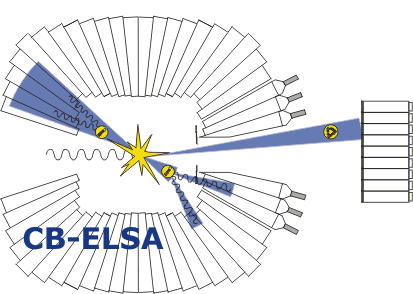
|
|

|
SFB/TRR 16
Subnuclear Structure of Matter
The Standard Model of the strong, electromagnetic and weak interaction is in general very well established. Until recently the Standard Model still had two open ends. On the one side it was the search for the Higgs Boson at highest energies and on the other side it is the formation and understanding of the different forms of strongly interacting matter. First evidence for the possible existence of the Higgs boson was recently reported by the LHC experiments. The Higgs mechanism is responsible for the creation of the masses of quarks and leptons. However, this explains only a few percent of the mass of the nucleons and therefore of the matter surrounding us. The rest of the mass is due to the strong interactions itself. The question how this happens and how one can understand the spectrum and the properties of the emerging strongly interacting particles (hadrons) is the central subject of the CRC 16. The aim is to understand the strong interaction in the non-perturbative regime.
The experiments are performed at the electron accelerator ELSA at Bonn. The aim is to gain a good understanding of the spectrum and the properties of baryon resonances and to investigate the underlying QCD dynamics in the photoproduction of mesons. Furthermore, in-medium properties of mesons are investigated. To perform these experiments two detector systems are available, the Crystal Barrel/TAPS and the BGO-OD experiment. The polarized target and the availability of a polarized beam make e.g. the measurement of highly sensitive double polarization observables possible. Polarization observables are of decisive importance for an extraction of the resonances from the data. The experiments are complemented and extended by theoretical studies of strongly interacting systems build out of light quarks. State of the art methods, like e.g. effective-field-theories and lattice simulations are used. Examples are the generation of resonances in coupled channel unitarized chiral perturbation theory or the development of finite volume methods for resonances in lattice QCD. The highly complex subject of the CRC 16 can only be advanced by a close cooperation of experiment, theory and partial-wave analysis as well as instrumentation.
News
SFB/TRR16 Symposium
The SFB/TRR16 Symposium takes place from 06.06.-09.06.2016 in Bonn in the University Club.
May 2, 2016







